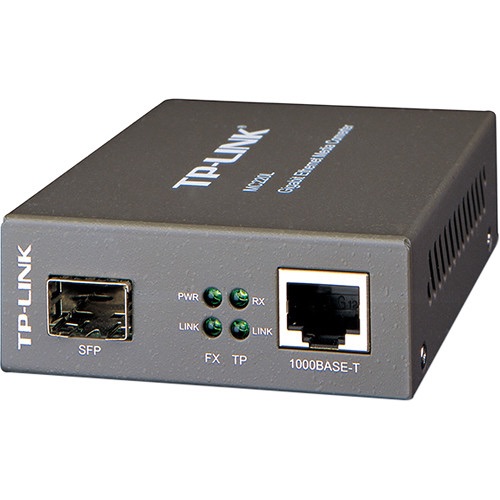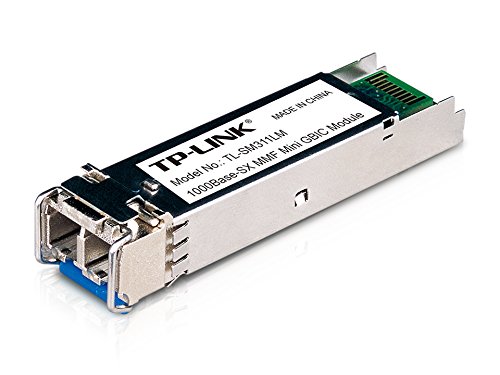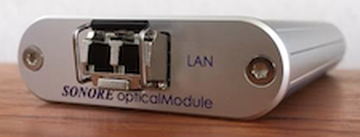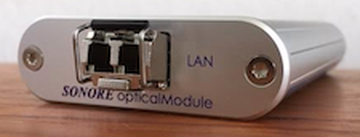Hi Mr. Peabody,
The bandwidth of optical is very high, which is why many telecoms use fiber for long runs over "copper". IIRC (and I may be wrong), there's less insertion loss (loss of dB over distance) for optical than Ethernet cables.
What I can say, going from a 7M long run of Cat7 ethernet to a 7M run fiber was a notable reduction in the noise floor, for a much quieter and a much more extended, airy and open top-end. The reduction in the noise floor "opened up" the presentation overall as well as making it more "natural-sounding". This is consistent with my experience with Shunyata Research's "noise management" products (power distributors and cables) that do so much to reduce the impact of noise, both the overall noise floor and CCI, for example.
A key thing, as with any active device, is to manage noise. The FMCs come with el cheapo little wall warts that I would guess are very noisy. This is why I've got much quieter LPS' that are plugged into quiet power cables and/or power distributors, to keep the noise from adding more active devices down as much as possible. Distance and the old inverse square law helps a lot here.
The next tweak will be new FMCs: the upstream FMC will be a TP-link MC220L, which accepts an SFP (small form-factor pluggable) optical transceivers.
I've ordered a TP-link SFP optical transceiver per the specifications in Sonore's SystemOptique specification for the MC220L:
The new SFP-type FMC will be the upstream FMC, and will be powered by my low-noise Jameco 9V regulated linear power supply pulled into my Shunyata Diamondback power cable via an Audioquest IEC>3US "power strip" (that little thang works really well, thank you, AQ!) It will be connected to the downstream FMC by a 7M run of Tripp-Lite 62.5/125 LC/LC OM1 specification optical fiber; this run of fiber cost me a whopping...$21.
The new downstream FMC will be the newly-released Sonore OpticalModule. The OpticalModule has very low noise regulators and a FEMTO clock and will be the "downstream" FMC that will connect via Ethernet to the Sonore microRendu.
This will initially be powered by my iFi iPower LPS that is plugged into the Triton.
My hypothesis, given Sonore's expertise in this area, is the downstream FMC will be considerably quieter than the current one, and provide improved sonic performance over my current TP-link FMCs. I have a fair degree of confidence in this, in that, like your friend, virtually
everything I have done to improve the overall "specification" of the digital streaming front-end has resulted in audible improvements in the musical presentation, like plugging in a Shunyata Venom 14 for Mac Mini and the AC/DC tansformer for the Uptone Audio LPS-1 "Ultracap". Or, for example, when I replaced the POS wall-wart that comes with the current upstream FMC with the new Jameco 9V regulated LPS that I referenced for Bart above, and plugged
that into the Shunyata Diamondback/AQ IEC>3US, all these brought audible improvements to the presentation, even to having to lower the volume on the preamp a little to keep the SPLs at my preferred range.
I've come to the same conclusion that Hans Beekhuyzen has: that improving the "streaming front end" can pay dividends comparable to, or as siginificant as, the DAC itself. The streaming system took a significant step up in performance when I installed my Shunyata Alpha USB; it was equivalent to a "component-level" upgrade. Using that as a "yardstick", if the degree of improvement the Alpha USB brought was arbitrarily set to 100, the fiber setup probably gave me an additional 25 on top that, "icing on the cake".
Once I've got that new fiber system in place, and, if it brings the improvements I am pretty confident it will provide, I'll be ordering a Keces P3 from Mike, to provide an even cleaner and quieter power to both the OpticalModule and the network bridge.





